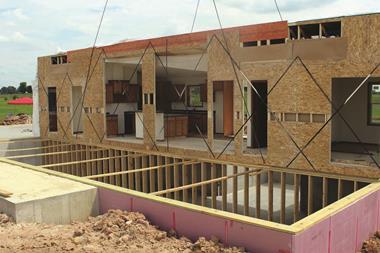An apocryphal letter to the Daily Telegraph once welcomed the prospect of plain cigarette packaging: it would allow governments more room on the back of each packet to draft their policies.
It may be that the ink scribbled on the packet of 10 reserved for the prime minister’s Starter Home initiative had not dried when it was rushed out on 15 December, some six months early. Even some of the co-signatories of the cheap homes effort — offering 20% discounts — were apparently caught off-guard by the announcement.
“We got a call from the PM’s office late one week outlining the policy asking whether we could get back to them early the following week giving our views,” one bemused company official told me. “We got back saying ‘yes, it sounds quite interesting, might help first time buyers, but we would need to see far more detail etc’. We heard nothing else for two weeks and then, suddenly, the announcement came out and we’re down as supporting it.”
The company in question is one of 16 major housebuilders and developers that have “pledged their support to the scheme”, according to the PM’s press blurb.
The Starter Home initiative is designed to offer first time buyers under the age of 40 a minimum 20% discount on 100,000 newly-built homes. “Many of the country’s leading housebuilders and councils are already looking at sites that could be used for new homes,” enthused the press release.
The initiative will theoretically be paid for by allowing builders to develop brownfield sites and freeing them from Section 106 and other planning gain payments. An initial caveat is that the homes could then not be re-sold at market value for a fixed period.
Even the normally diplomatic RICS detected pre-election spin. “The government is obviously trying to pull out all the stops to get more houses built before the end of this parliament,”said UK head of policy Jeremy Blackburn.
Foremost among the institution’s concerns is the thought that by removing Section 106 requirements (effectively a subsidy to pay for affordable housing for rent), the government is merely supporting one form of tenure at the expense of another, without adding to the total number of homes built. One might call it “robbing public Peter to pay private Paul”.
Cutting corners
My own back-of-envelope calculations (we’re a fag-free household) cast some doubt on the PM’s calculations, which estimate that Section 106 and the like tot up to £15,000 on average. The average Barratt private home, for example, clocks in at a shade above £240,000. It’s questionable whether Barratt and its rivals will forego £48,000 of revenue for £15,000 of reduced cost.
That suggests some corners might have to be cut. However, government insists the homes “are not only lower cost but also high-quality and well-designed”.
It has drafted in the great and the good of architecture to keep tabs on the volume housebuilders, an industry many in the profession (note the distinction) view with scantly concealed derision (remember “shameful shoe box homes”, among other jibes from the RIBA?).
Heading the government-appointed design panel are postmodernist poster boy Terry Farrell and neoclassical grandee Sir Quinlan Terry. I’d love to be a fly on the wall in their meetings with Persimmon, Redrow et al (“er, what do you mean by neo-eclecticism?”).
Quite where these architects’ experience in mass housebuilding comes from is unclear. Sir Quinlan’s highest profile homes include the six bespoke Regent’s Park villas built between 1988 and 2004, all in different architectural styles and individually named: Corinthian, Gothick, Ionic, Regency, Tuscan and Veneto. They were rumoured to cost around £10m apiece back then. Not exactly starter homes, other than for, perhaps, young Sheikhs.
If the housebuilders ever pay more than lip service to the scheme (they’ve done very well out of the Help to Buy initiative, so not to at least appear to play ball might be counter-productive), there could be scope for some imaginative interpretation of the rules.
Not least would be how to calculate the supposed 20% discount. Knight Frank mused on this point in one of its regular missives: “Will it be 20% compared to other market value houses in the area at that time, or will it be a ‘theoretical’ discount against what the properties would have cost otherwise?”
Other questions I’d add are: whether the homes will be smaller (and thus with lower re-sale value), or will they be stuck with a “Lidl” label that current or future buyers’ lenders would get sniffy about? Both of these could mean that government-supported first time buyers might end up stuck on the first rung of the housing ladder.
Answers please? (Ideally on the back of a fag pack).
Alastair Stewart is building and property analyst at Progressive Equity Research
































No comments yet